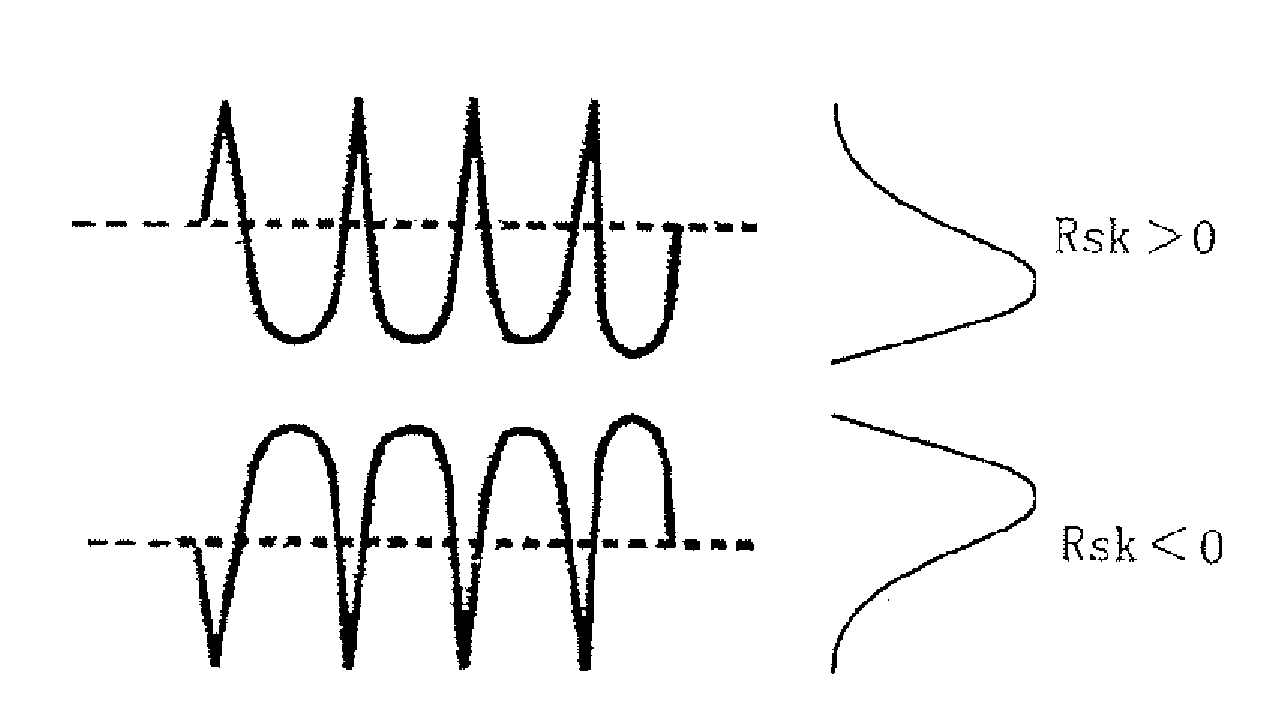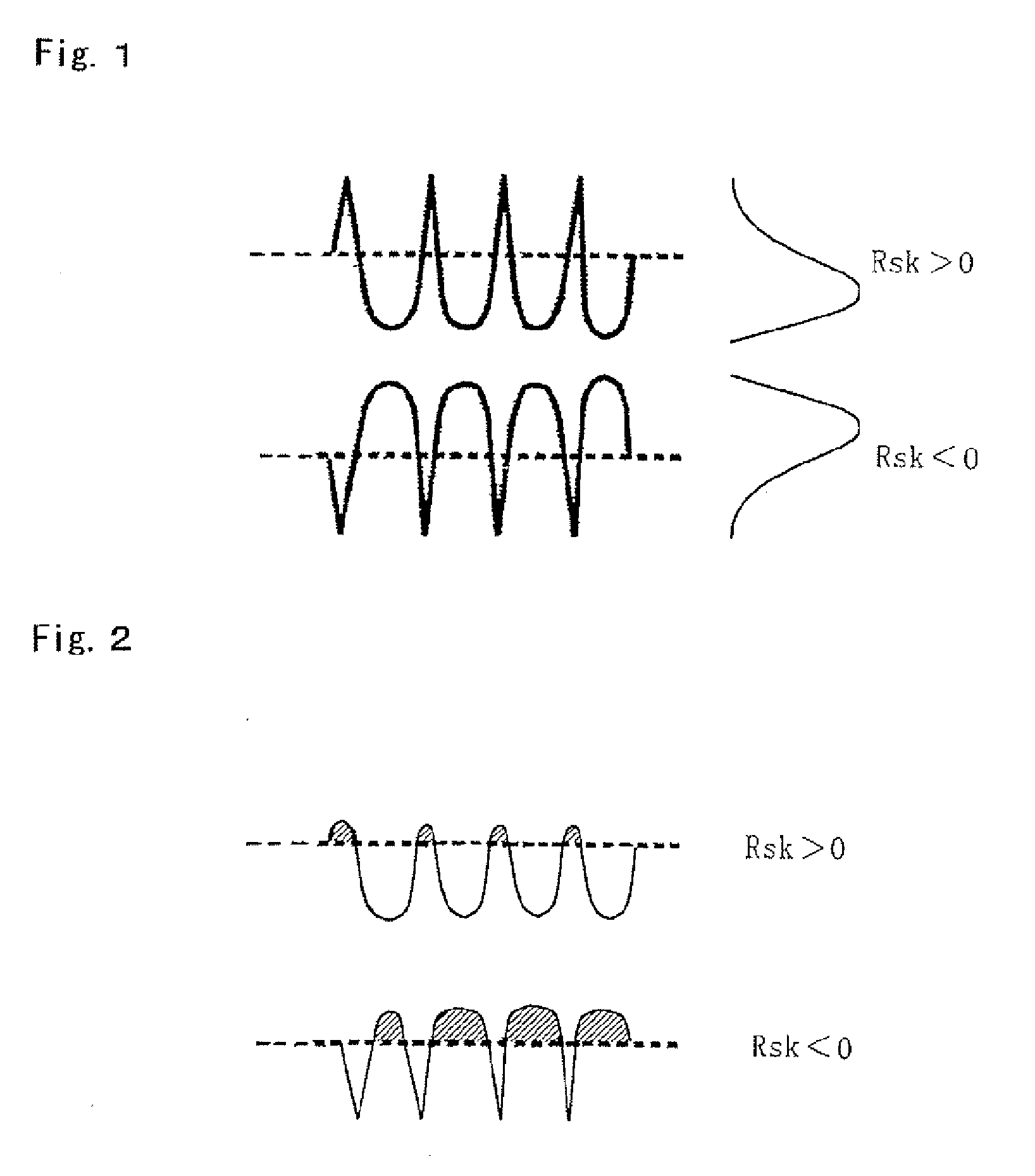Spray-coated member having an excellent resistance to plasma erosion and method of producing the same
a technology of plasma erosion and coating member, which is applied in the direction of superimposed coating process, instruments, nuclear engineering, etc., can solve the problems of deteriorating the quality of the product, increasing the adhesion amount of particles large variation of mechanical load to the jig or the constituent, so as to achieve excellent resistance to plasma erosion and effectively prevent the rescattering
- Summary
- Abstract
- Description
- Claims
- Application Information
AI Technical Summary
Benefits of technology
Problems solved by technology
Method used
Image
Examples
example 1
[0067] In this example, a coating of Al2O3, Y2O3 or Al2O3—Y2O3 composite oxide is directly formed on a surface of SUS304 substrate (40 mm in width×50 mm in length×7 mm in thickness) at a thickness of 120 μm by a plasma spraying process, and thereafter the surface thereof is subjected to the measurement of skewness value in the height direction of the coating surface by means of a roughness measuring meter of SURFCOM 1400D-13 (made by Tokyo Seimitsu Co., Ltd.) to distinct into coating of Rsk>0 and coating of Rsk<0. These coatings are subjected to or not to an irradiation of an electron beam to prepare test specimens.
[0068] With respect to these test specimens, the following items are examined by means of a reactive plasma etching apparatus having a plasma irradiating power of 80 W.
[0069] (1) Resistance to Plasma Etching
[0070] The surface of the test specimen is etched by flowing a mixed gas of CF4 gas (60 ml / min) and O2 gas (2 ml / min) into the plasma etching apparatus for 800 minu...
example 2
[0078] In this example, an undercoat of 80 mass % Ni-20 mass % Cr is formed on a surface of Al substrate (30 mm in width×50 mm in length×5 mm in thickness) at a thickness 80 μm and a coating of Al2O3, Y2O3 or Al2O3—Y2O3 composite oxide is formed thereon at a thickness of 250 μm through a plasma spraying process, respectively. Thereafter, Rsk value of roughness curve on the surface of the spray coating is measured by means of the aforementioned roughness meter to distinct Rsk>0 and Rsk<0, which are subjected to an irradiation of electron beam.
[0079] These spray coating specimens are subjected to plasma etching under the following conditions, the number of particles scatted by the etching action is compared with the number of particles adhered on a surface of a silicon wafer having a diameter of 3 inches arranged in the same apparatus. Moreover, the number of the adhered particles is examined by a surface inspection apparatus (magnifying glass), in which particle size of not less tha...
example 3
[0083] In this example, all test specimens used in the test of Example 2 for the resistance to plasma erosion are subjected to a thermal shock test. That is, the test specimen of the spray coating used in the test of Example 2 was subjected to the plasma erosion test under a corrosive environment containing a halogen gas, during which the corrosive halogen gas penetrated through pores of the top coat into the interior of the coating and may corrode the undercoat to easily peel off the top coat.
[0084] In the thermal shock test, the test specimen is heated in an electric furnace of 300° C. for 15 minutes and thereafter cooled in air of 24° C. for 20 minutes, and such an operation is repeated 10 times. Thereafter, the change of the top coat is visually observed. As a result, it has been confirmed that all test specimens shown in Table 2 hold a good resistance to thermal shock without causing the cracking of the top coat and the peeling of the coating.
[0085] The invention is applicabl...
PUM
| Property | Measurement | Unit |
|---|---|---|
| thickness | aaaaa | aaaaa |
| particle size | aaaaa | aaaaa |
| roughness | aaaaa | aaaaa |
Abstract
Description
Claims
Application Information
 Login to View More
Login to View More - R&D
- Intellectual Property
- Life Sciences
- Materials
- Tech Scout
- Unparalleled Data Quality
- Higher Quality Content
- 60% Fewer Hallucinations
Browse by: Latest US Patents, China's latest patents, Technical Efficacy Thesaurus, Application Domain, Technology Topic, Popular Technical Reports.
© 2025 PatSnap. All rights reserved.Legal|Privacy policy|Modern Slavery Act Transparency Statement|Sitemap|About US| Contact US: help@patsnap.com



